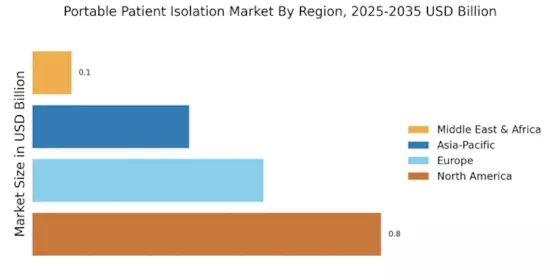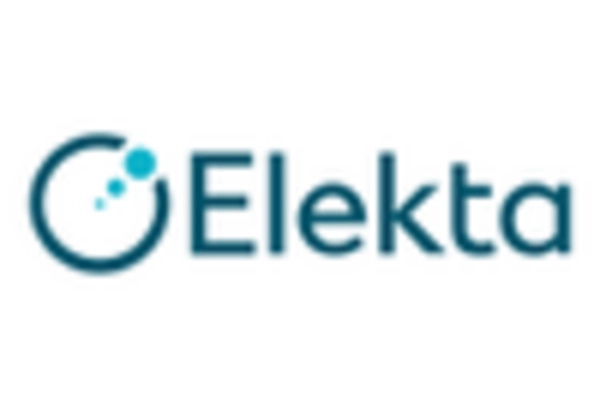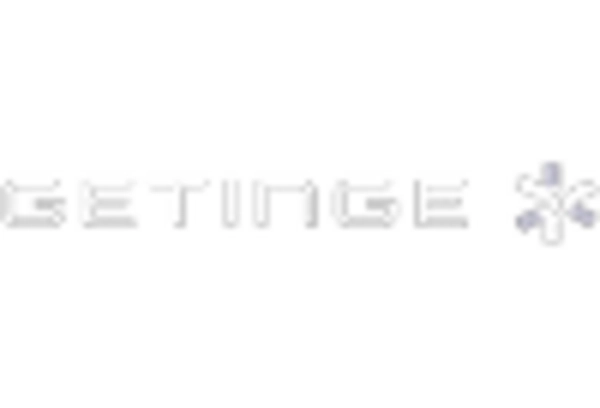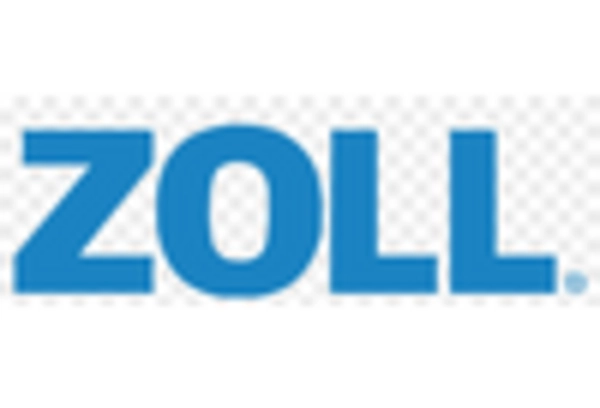Regulatory Support and Compliance
Regulatory support plays a crucial role in shaping the Portable Patient Isolation Market. Governments and health organizations are establishing stringent guidelines and standards for patient isolation practices, which in turn drives the demand for compliant portable isolation solutions. The implementation of these regulations ensures that healthcare facilities maintain high safety standards, thereby increasing the adoption of portable isolation units. Furthermore, financial incentives and grants provided by various health authorities encourage manufacturers to innovate and comply with these regulations. This supportive regulatory environment is likely to propel market growth, as facilities seek to align with best practices and enhance patient care.
Rising Incidence of Infectious Diseases
The rising incidence of infectious diseases is a significant driver for the Portable Patient Isolation Market. With the emergence of new pathogens and the resurgence of previously controlled diseases, healthcare systems are under increasing pressure to implement effective isolation measures. This trend is prompting healthcare facilities to invest in portable isolation solutions that can be rapidly deployed in response to outbreaks. Market analysts project that the demand for portable isolation units will increase by 10% annually, as healthcare providers seek to enhance their preparedness for infectious disease outbreaks. This growing need for effective isolation solutions is likely to shape the future of the market.
Increased Awareness of Infection Control
There is a growing awareness of the importance of infection control measures within the Portable Patient Isolation Market. Healthcare professionals and institutions are increasingly recognizing the need for effective isolation solutions to prevent the spread of infectious diseases. This heightened awareness is leading to greater investment in portable isolation technologies, as hospitals and clinics aim to protect both patients and staff. Market data indicates that the demand for portable isolation units has risen by approximately 15% in recent years, reflecting a shift towards proactive infection control strategies. As awareness continues to expand, the market is expected to see sustained growth.
Aging Population and Increased Healthcare Needs
The aging population is contributing to the growth of the Portable Patient Isolation Market. As the demographic shifts towards an older population, there is a corresponding increase in healthcare needs, including the management of chronic diseases and infections. Older adults are more susceptible to infections, necessitating the use of portable isolation solutions in various healthcare settings. This demographic trend is expected to drive market growth, with projections indicating a potential increase in demand for portable isolation units by 12% over the next few years. Healthcare providers are likely to prioritize the implementation of these solutions to ensure the safety and well-being of their aging patients.
Technological Advancements in Isolation Equipment
The Portable Patient Isolation Market is experiencing a surge in technological advancements that enhance the efficiency and effectiveness of isolation equipment. Innovations such as advanced filtration systems, real-time monitoring capabilities, and mobile applications for remote management are becoming increasingly prevalent. These technologies not only improve patient safety but also streamline the workflow for healthcare providers. The integration of artificial intelligence and machine learning into isolation systems is expected to further optimize patient care. As a result, the market is projected to grow at a compound annual growth rate of approximately 8.5% over the next five years, driven by the demand for more sophisticated isolation solutions.


















Leave a Comment